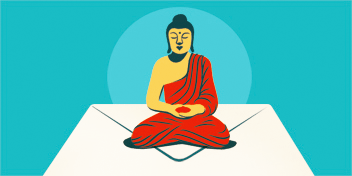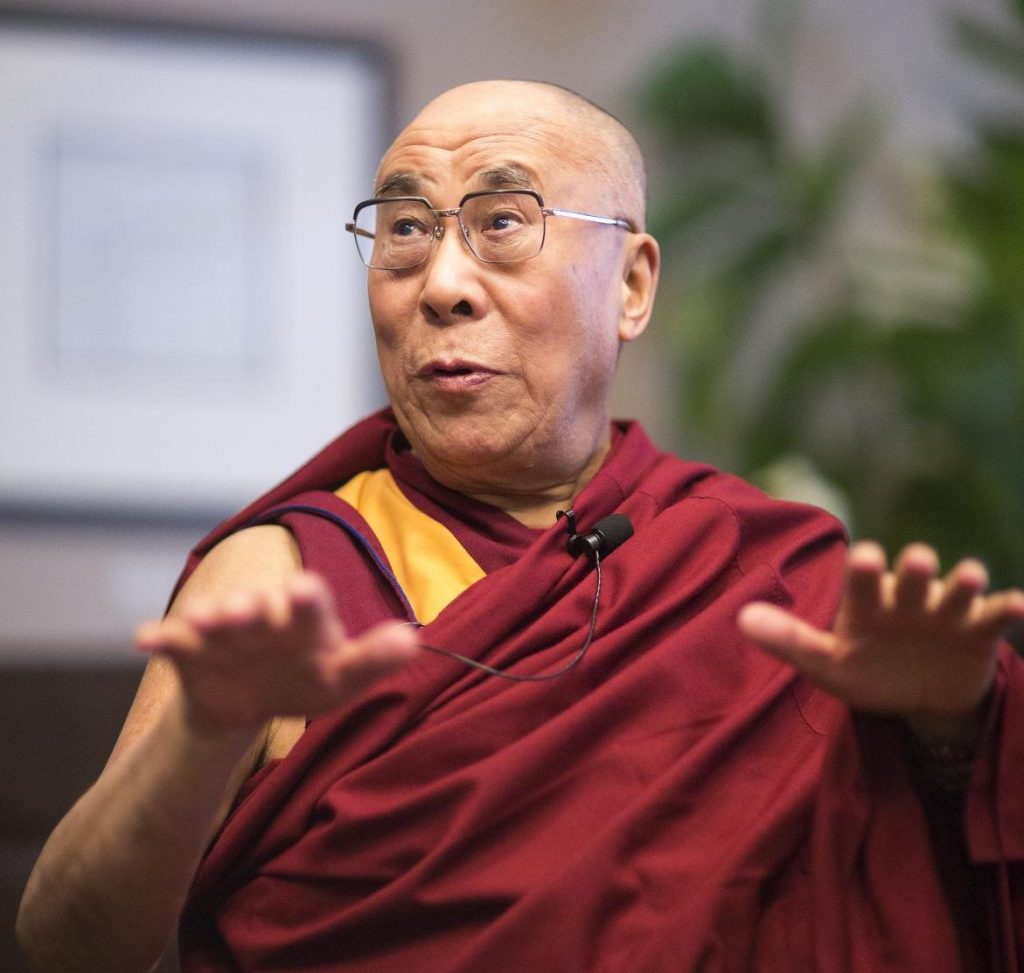When I first heard about the Dalai Lama’s recent encounter with a young boy, my heart dropped. At first, I couldn’t bring myself to watch the video. I thought about what the boy must’ve experienced, and I knew this would be devastating for the already vulnerable Tibetan community.
I’m a doctoral candidate in Buddhist studies and masculinity studies at Northwestern University and a practicing Buddhist. I speak Tibetan and have lived, researched, and practiced in Dharamsala, where His Holiness the Dalai Lama lives. Throughout my life, I’ve deeply valued the Dalai Lama’s impactful work for peace, nonviolence, religious tolerance, and environmental justice.
The idea that the Dalai Lama had harmed a child conflicted with everything I knew about him, but I also knew the incident required serious examination. Since the news broke, I’ve been reflecting on what happened, and I’ve decided that it’s important to unpack its nuances for an Anglophone audience in a measured way.
Before doing so, I want to acknowledge that the Dalai Lama’s actions in the video were downright weird and deeply uncomfortable to watch. He made a child uneasy, and the significant power differential between the two made this episode especially troubling. Simply hearing that “the Dalai Lama asked a boy to ‘suck his tongue’” was enough to make my stomach turn.
However, after watching the video myself—the full 1:59 version, not the widely circulated edited one—I also believe that what transpired resists easy categorization and comparison to instances of sexual misconduct among Western religious leaders, which no doubt leaped to the minds of many readers.
In interpreting what happened, we need to take a slower approach that incorporates Tibetan voices, avoids reducing what happened to a familiar script without thinking holistically about who the Dalai Lama is in context, and elevates the stories of survivors of sexual misconduct in religious settings more broadly.
Western media regularly disregard Tibetans’ own views and interpretations of their community. This story was no exception. Coverage followed a predictable format, with most stories outlining the incident in brief, salacious terms before elevating decontextualized voices of moral outrage.
Some pieces did offer up paltry explanations of Tibetan cultural context, but these often had the effect of furthering the neo-Orientalist presumption that Tibetans are unthinking and uncritically religious while implying that the “secular” West is intellectually and morally superior.
This is obviously not the case. Sexual misconduct is a deeply human problem, tied to hegemonic masculinity and the perverse manipulation of asymmetric power imbalances. It happens everywhere. Recently, both Tibetan men who are survivors of sexual misconduct in monastic settings and Tibetan Buddhist women have been bravely telling their own survivor stories.
In the West, we’ve been inundated with scandal after scandal of priest and youth pastor sex abuse in Christian contexts, which created an opening for a too-easy comparison in this case. One of the many problems with such a straightforward comparison, however, is that this was a singular event in a public setting, which is atypical in cases of sexual predation on children.
Numerous studies have shown that child abuse overwhelmingly occurs over a longer period of time, often in the context of a relationship. Predators typically build trust and then remove children to private settings to commit abuse, which is not what happened in this case.
One of my Tibetan friends observed that shameful desires are rarely, if ever, enacted in a televised setting broadcast to countless viewers; we tend to hide our prurient desires behind closed doors. It’s worth noting that the Dalai Lama has evinced a playful personality consistently throughout his life. In the video, he is laughing and smiling, displaying no embarrassment or shame.
I do not mean to erase or dismiss what unfolded in the video, or to suggest that elderly people aren’t capable of abuse. But I do think that the context reveals clues as to the Dalai Lama’s intention: in my view, this was not a man acting out of a perverse desire, but a non-native English speaker who, in trying to be lighthearted, made a mistake in judgment that crossed vast cultural horizons.
That said, as generations of gender scholars have pointed out, the long history of senior men abusing their power necessarily raises suspicions about patterns of behavior. A single event can signal a more expansive environment of abuse behind closed doors, and I acknowledge this wholeheartedly. Vigilant attention is necessary to protect children from abuse.
But to me, this video is not evidence of a child abuser driven by a craven desire. True to his longstanding playful character, he was being jocular, following a Tibetan cultural script between grandparents and grandchildren that begins with a hug, moves to a kiss, and ends with a tongue grab. He clearly knows he made a mistake in discernment and has issued an apology. We should not jump from the display of one weird, inappropriate, or objectionable event to the imputation of an entire problematic character.
I also want to highlight the importance of context in interpreting the Dalai Lama and his actions. Countless Tibetans and other Buddhists encounter him as a living Buddha, who has diligently strived over the course of many lifetimes to purge his mind of all sensuous desires (‘dod chags) and attain boundless equanimity. For people who understand him this way, it is unthinkable to consider him as acting out of a craven desire.
When others see this video, however, they witness an elderly religious titan violating the boundaries of an innocent boy. I cannot appeal to Buddhist discourse or Tibetan history to speak to this audience, but I can point to two things. First, the boy’s and his mother’s comments afterward were joyful.
Second, I suggest looking at the strange timing of this disclosure—fully two months after the event, and not by the boy’s family or friends. The Dalai Lama is a highly charged political figure, subject to decades of attack and slander by the Chinese government. It’s worth querying who might have a stake in defaming him—and strategically editing the video.
As a scholar of masculinity and religion, I devote myself to uncovering the ways that male power becomes entangled in practitioners’ sincere religious aspirations, cultivating environments in which men eroticize and abuse that power in perverse and nauseating ways.
Though the recent incident was unsettling, it does not rise to this level. Instead of leaping to the conclusion that the Dalai Lama is an abuser, we could be taking this opportunity to listen to the many, many voices of women coming forward to speak about the pervasive problem of sexual abuse by Vajrayana Buddhist teachers—including right here in the US—voices that are routinely dismissed.
I conclude this reflection with a call for patience. My plea is to look at the Dalai Lama not in the narrow frame of one mistake, but in the wider frame of his countless contributions to the world, with an awareness of how context filters our understanding of events.
Thank you for subscribing to Tricycle! As a nonprofit, we depend on readers like you to keep Buddhist teachings and practices widely available.

